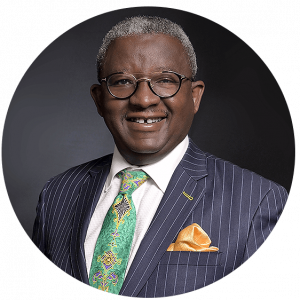Uchumi iko vibaya sana. This Swahili phrase, which means – the economy is doing really badly – has become a refrain in conversations across Kenya.
The word economy comes from the ancient Greek word, ‘oikonomia’ which literally translated means the administrative structure of managing production, distribution, and consumption of household or village goods and services. Indeed, it is very important for us to go back to the household-centered basics as we seek to localize Kenya’s economy.
Firstly, when people repeatedly say that the economy is very bad, they often mean that there are no jobs or that the cost of living has gone very high, which translates to difficult times in their households. For the government and economists, words like ‘recession’ come up when they are analyzing a bad economy. Kenya’s Economic Report 2021 noted that ‘The pandemic has plunged the economy into a recession, with a very sharp contraction experienced for the first time in the last two decades.’
In light of the foregoing, we all agree that the economy is in bad shape, hence there is no need to belabor that point. We should shift our focus on growing our economy so that our households can reap all the benefits of a strong economy.
For us to grow our economy in the most powerful and sustainable manner that benefits households, we must localize it.
In 2021, the Kenya National Bureau of Statistics (KNBS) released a report entitled, ‘inequality trends and diagnostics in Kenya 2020.’ The report ranked Turkana as the poorest and most unequal county. This is what happens when we don’t localize an economy. Turkana may be deemed as poor in strict economic terms, but its wealth potential is boundless.
For starters, Turkana is Kenya’s largest County. At 68,680 square kilometers, it is almost three times the size of the great Nation, Rwanda. This sheer size alone is enough proof of Turkana’s riches. We cannot afford to consign our largest County into a bin of poverty.
This expansive land is reportedly home to at least 1,600,000 cattle. In 2021, the Government committed to purchasing 1,000 cattle from Turkana as a drought mitigation measure. The budget for purchasing each cow was Shs20,000. If we go by this minimal price of cattle, then Turkana’s 1,600,000 cattle are worth a whopping Shs32 billion. The value is even higher if we work with live cattle weight at market price. This is wealth that can be industrialized exponentially if we localize Turkana’s economy.
The United States produces one-fifth of the world’s beef, making it the largest beef producer globally. South Africa’s annual production of 950,000 metric tonnes of beef makes it Africa’s largest producer. If we unlock Turkana’s local economy, that vast County can catapult Kenya into such levels of beef production. That will help Turkana a lot more than any health ever will.
Turkana’s natural resources are the key to unlocking its local economy. This necessitates a paradigm shift that will transcend marketplaces into learning institutions and homesteads. Turkana children must be taught the immense value of their land, livestock, and other natural assets. They cannot grow up with a debilitating poverty mindset. This means that our national curriculum must be responsive to unique geographical and cultural attributes.
At the household level, we must help parents to develop their locally available resources like livestock so that they can earn from them sustainable livelihoods. This will eventually do away with the notion that Turkana’s wealth can only originate from external sources.
What is true for Turkana is true for the rest of the country. All the 47 Counties have unique natural resources that can create wealth for them. Since the advent of devolution in 2013, County Governments have made commendable strides in this direction. But we still have a long way to go.
In addition to tapping optimally into their respective natural resources, Counties must also step up trade amongst themselves. Such trade must be consistently beneficial and profitable for households. We must embrace this approach if we are to localize our economy in this country. Think green, act green.

